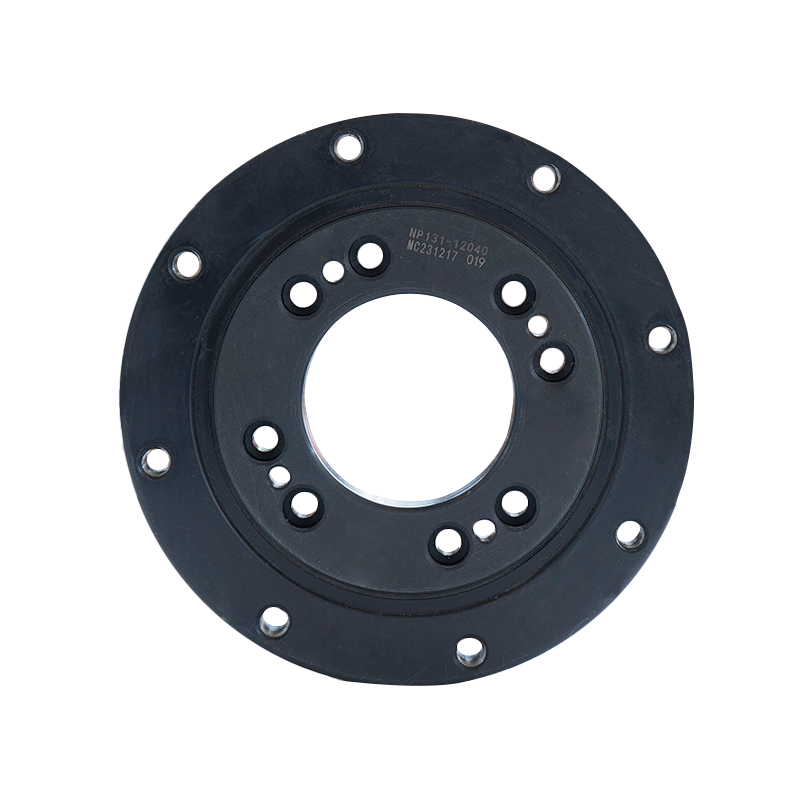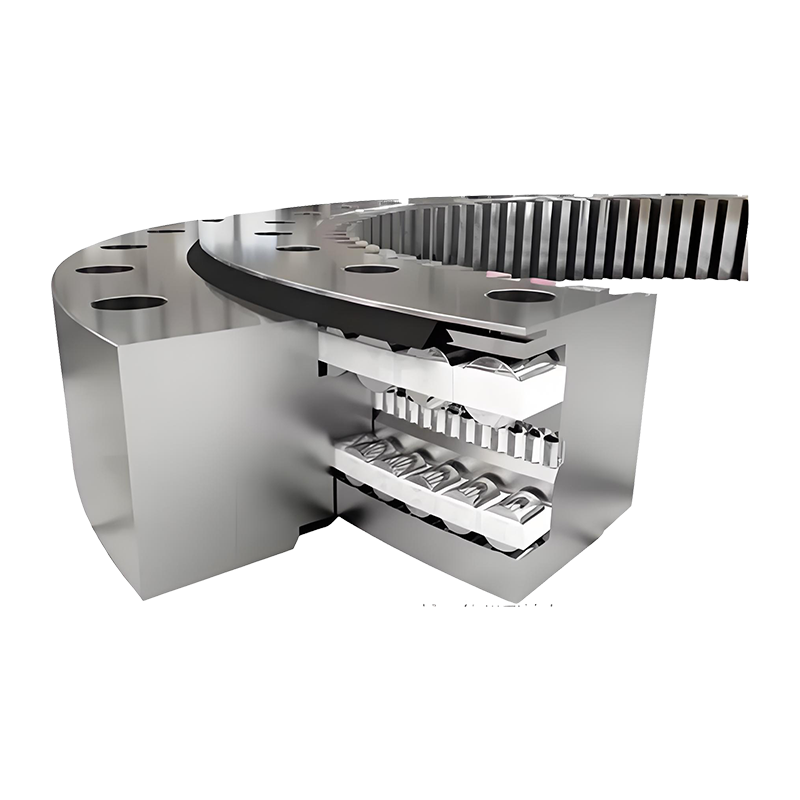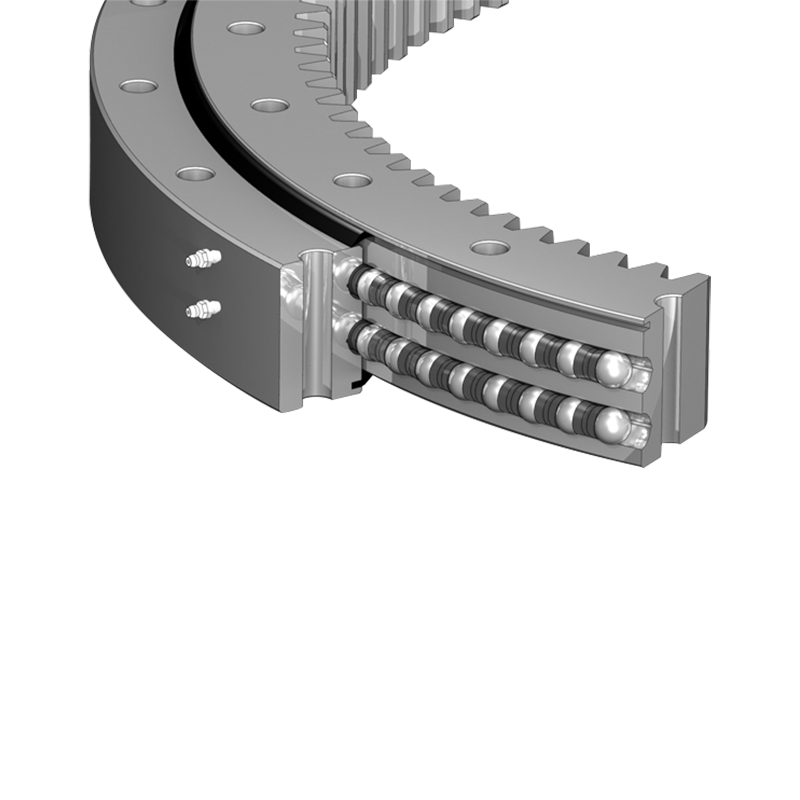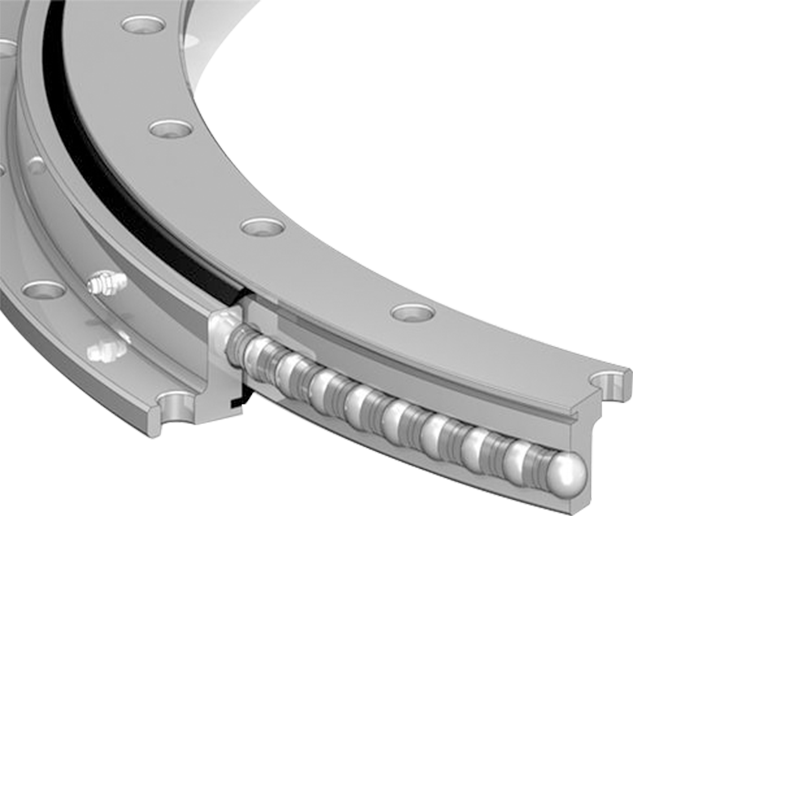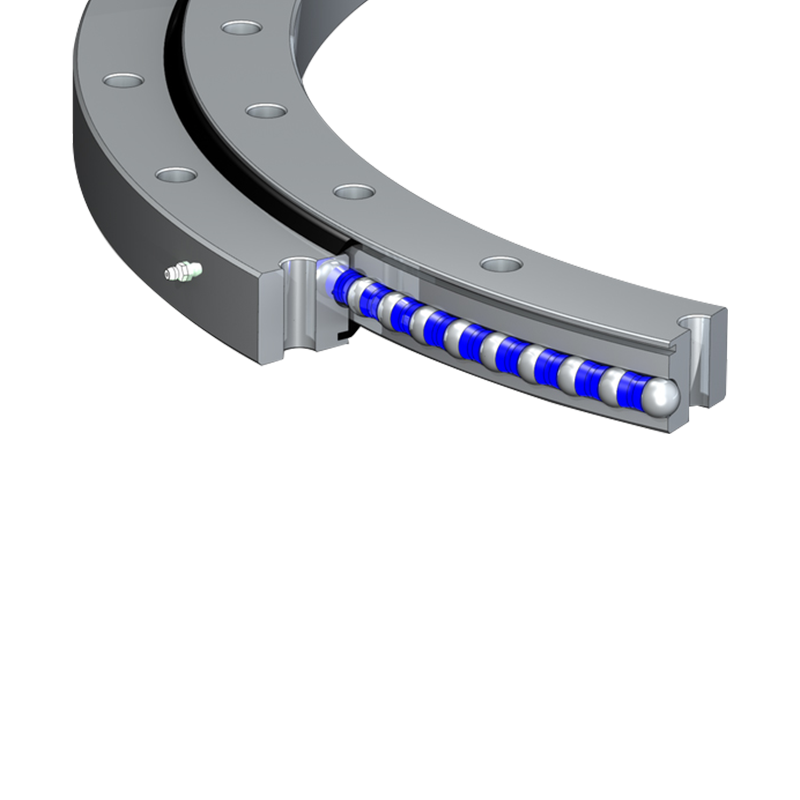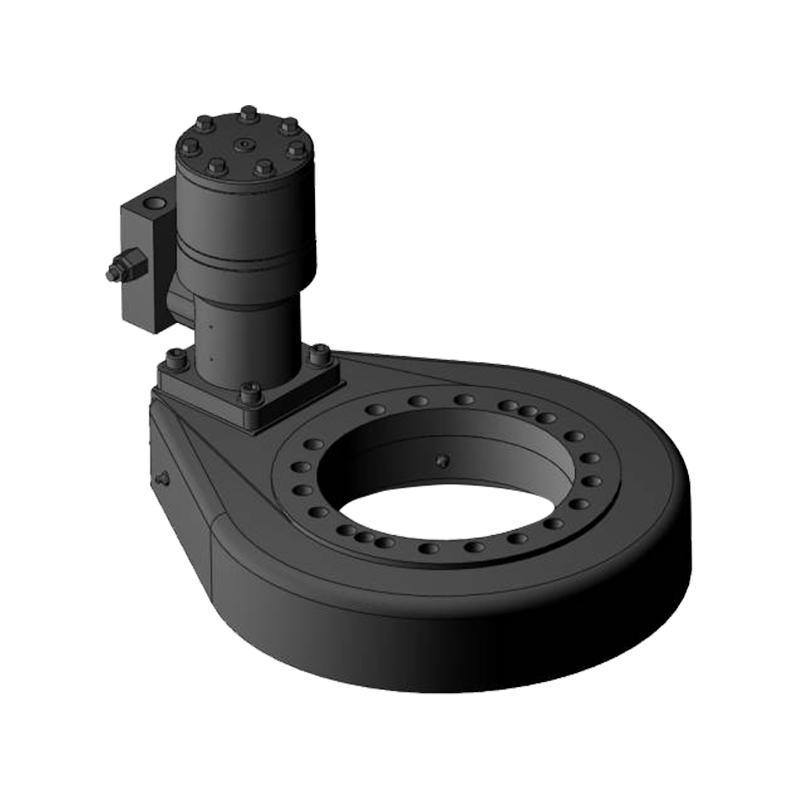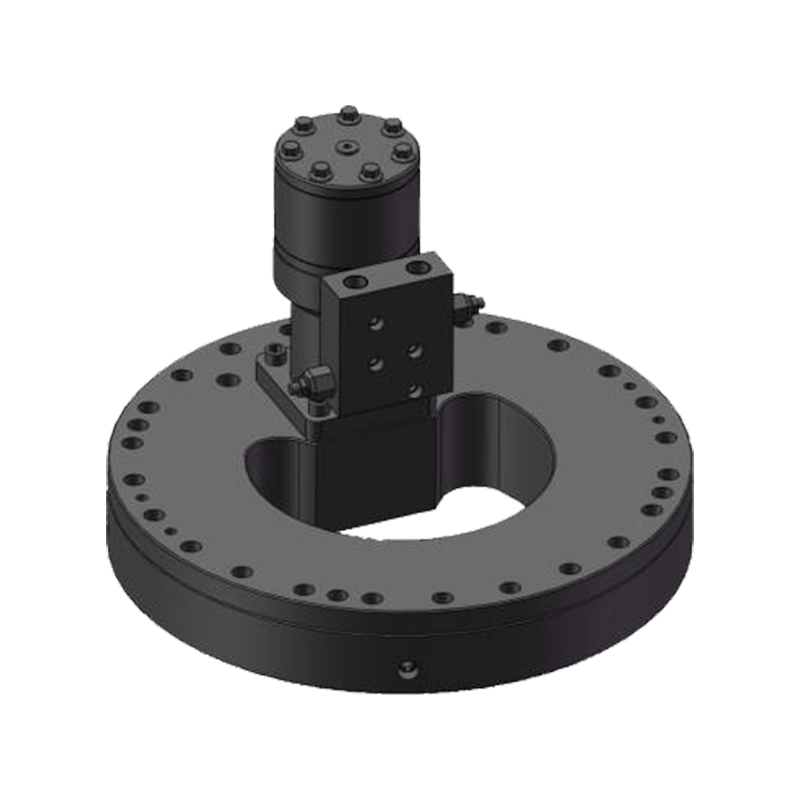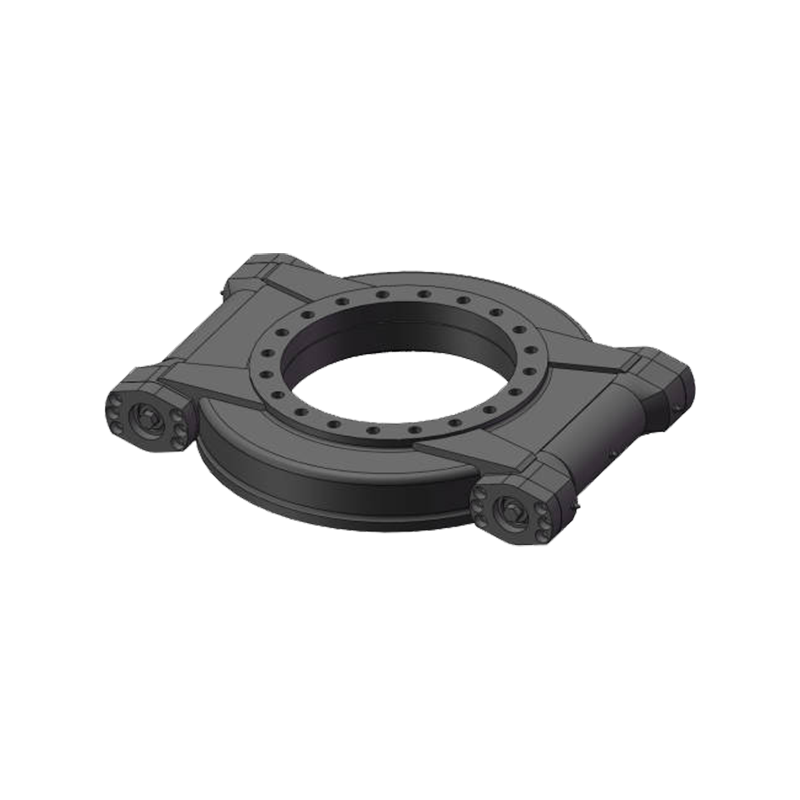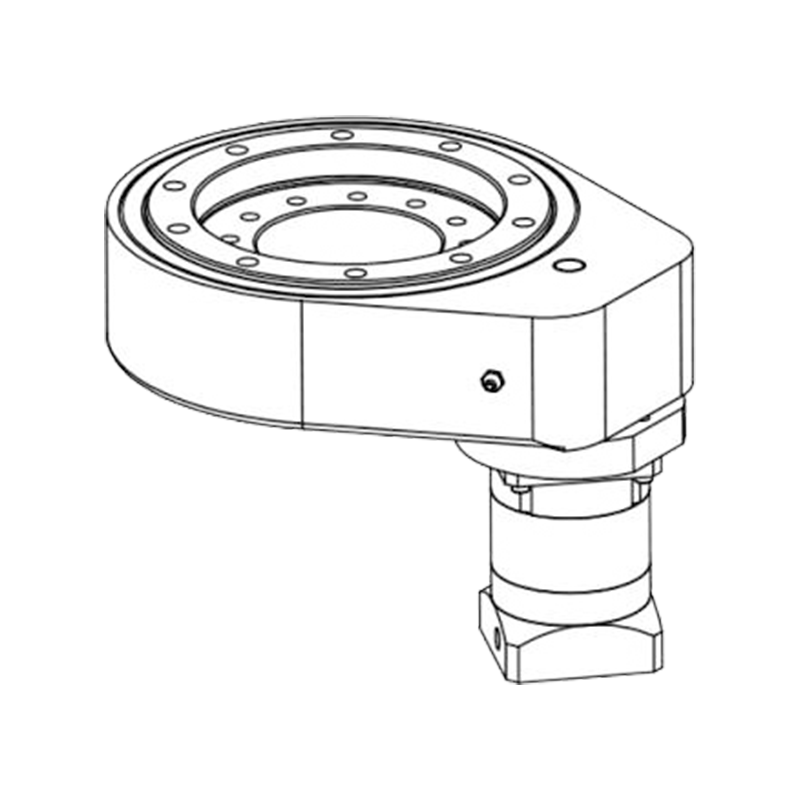Double-Row Equal-Diameter Ball Slewing Bearings: Engineering Excellence for Heavy-Duty Applications
 2025.04.03
2025.04.03
 Industry news
Industry news
Design Principles and Geometric Configuration
1. Structural Architecture
A double-row equal-diameter ball slewing bearing comprises:
-
Inner and Outer Rings: Precision-machined races with hardened tracks to accommodate ball rows.
-
Double-Row Ball Arrangement: Two concentric circular rows of identical-diameter balls, ensuring balanced load distribution.
-
Cage or Separator: Maintains uniform ball spacing and minimizes friction-induced skewing.
-
Seals and Lubrication Channels: Protect against contaminants and ensure consistent grease distribution.
2. Load Distribution Mechanics
-
Axial Loads: Transferred through the 45° contact angle between balls and raceways.
-
Radial and Moment Loads: Distributed across both rows via geometric symmetry, reducing stress concentrations.
-
Finite Element Analysis (FEA): Used to simulate load-sharing efficiency, optimizing raceway curvature (e.g., Gothic arch vs. circular profiles).
3. Contact Angle Optimization
Adjusting the contact angle (typically 30°–60°) balances load capacity and rotational torque. A 2023 ASME Journal of Tribology study found that a 45° angle maximizes fatigue life under combined axial and moment loads.
Material Selection and Manufacturing Precision
1. High-Performance Alloys
-
Case-Hardened Steel (e.g., 42CrMo4): Core toughness (≥ 300 HB) with surface hardness (58–62 HRC) via carburizing.
-
Bearing Steel (SUJ2/SAE 52100): For high-purity applications, offering fatigue resistance up to 1,500 MPa.
-
Corrosion-Resistant Coatings: Zinc-nickel electroplating or DLC (diamond-like carbon) for offshore environments.
2. Precision Manufacturing Processes
-
Raceway Grinding: Achieves surface roughness < 0.2 μm Ra using CNC grinding machines.
-
Ball Sorting: Matches ball diameters within ±1 μm tolerance to prevent uneven load distribution.
-
Heat Treatment: Induction hardening ensures depth-controlled case hardening (2–5 mm).
Performance Characteristics
1. Load Capacity Metrics
| Load Type | Static Capacity (C0) | Dynamic Capacity (C) |
|---|---|---|
| Axial Load | 1,500 kN | 800 kN |
| Radial Load | 900 kN | 450 kN |
| Moment Load | 2,200 kN·m | 1,100 kN·m |
| (Typical values for a 2,000 mm diameter bearing) |
2. Fatigue Life Calculation
The modified Lundberg-Palmgren equation predicts bearing life (L10):
Where is the equivalent dynamic load.
3. Lubrication Strategies
-
Grease Selection: Lithium-complex greases with EP additives for high-pressure applications.
-
Re-lubrication Intervals: Determined by operating speed (n) and temperature (T):
Industrial Applications
1. Wind Energy
-
Yaw and Pitch Systems: Double-row bearings withstand 20–25 kN·m moment loads in 4 MW turbines.
-
Offshore Adaptations: Stainless steel variants resist saltwater corrosion (ISO 12944-9 compliance).
2. Construction Machinery
-
Tower Cranes: Support slewing motions under 50-ton payloads with ≤0.1° rotational backlash.
-
Excavators: Enable 360° rotation with integrated slew drives (efficiency ≥92%).
3. Robotics and Automation
-
Robotic Welding Arms: Precision bearings ensure ±0.01 mm repeatability in automotive assembly lines.
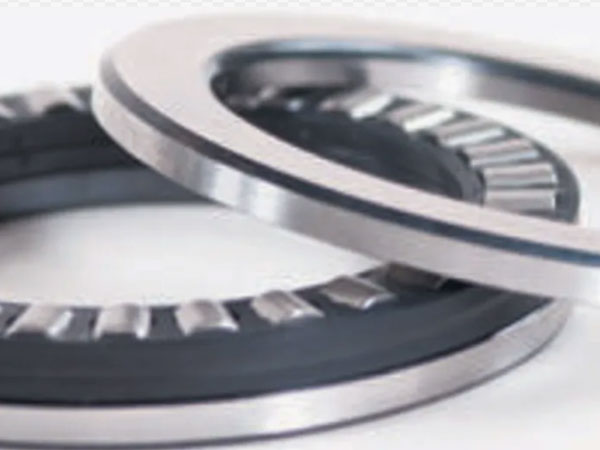
-
Medical Imaging Systems: Low-noise, non-magnetic designs for MRI gantries.
Challenges and Mitigation Strategies
1. Edge Loading in Misalignment
-
Cause: Angular misalignment >0.05° disrupts load symmetry.
-
Solution: Crowned raceways or self-aligning designs (e.g., spherical rollers in hybrid configurations).
2. Wear and Micropitting
-
Root Cause: Insufficient lubrication film thickness (Λ ratio <1).
-
Mitigation: Ultra-high viscosity (ISO VG 460) oils or solid lubricant (MoS2) coatings.
3. Thermal Expansion
-
Impact: Dimensional changes reduce preload, increasing vibration.
-
Compensation: Finite element modeling (FEM) to optimize clearance for ΔT up to 80°C.
Innovations and Future Trends
1. Smart Bearings with IoT Integration
-
Embedded Sensors: Strain gauges and accelerometers monitor load asymmetry and wear in real time.
-
Predictive Maintenance: AI algorithms analyze vibration spectra to forecast bearing failure (90% accuracy in pilot studies).
2. Advanced Coatings
-
Graphene-Enhanced Layers: Reduce friction coefficients by 40% (NanoMaterials Ltd., 2023).
-
Laser-Clad Surfaces: Repair worn raceways with minimal downtime.
3. Lightweight Composite Frames
-
Carbon Fiber-Reinforced Rings: Reduce weight by 30% while maintaining ISO 76:2006 load ratings.



